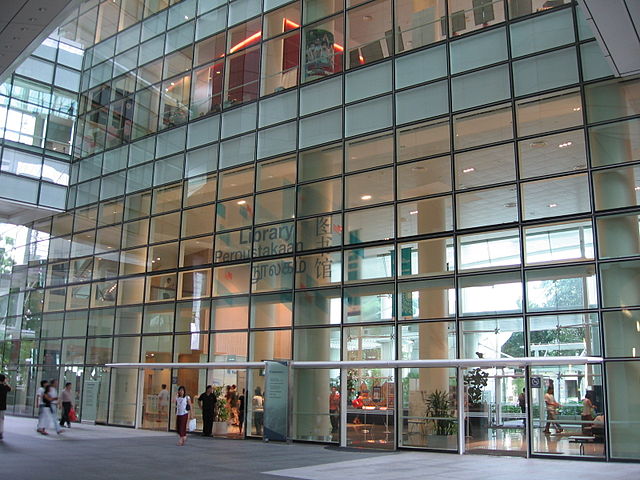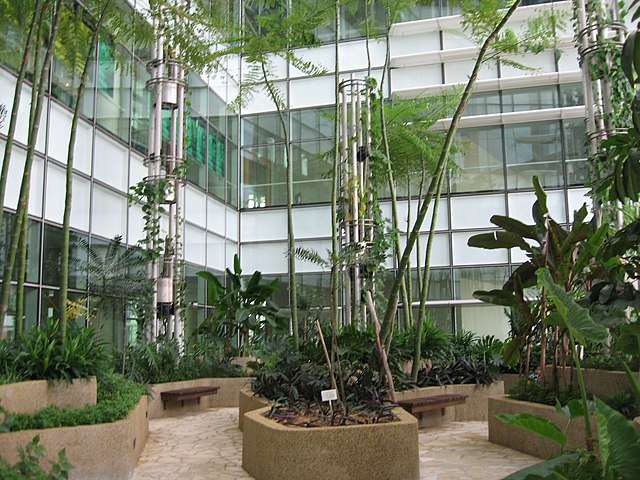As part of the 50th anniversary of Singapore’s independence this year, the country’s National Library Board has planned many celebrations.
Local media reports that The National Library Board’s Singapore Memory Project is sponsoring Past Forward, a showcase of many projects reviving recollections of the city from years ago. These include such popular institutions as the kopi tiam, or traditional Southeast Asian coffee shop, named after the Malay word for coffee and the Hokkien Chinese dialect word for shop. Serving dishes featuring egg, toast, and kaya, a spread made from coconut milk, eggs, and sugar, kopi tiams also served customers coffee, tea, and Milo, a chocolate and malt powder mixed with hot or cold water. At the kopi tiams, diners would enjoy eggs and toast or fried hor fun, a wide Chinese rice noodle cooked with eggs and cockles. Another speciality is coconut rice served with sambal chili paste, egg, and ikan bilis, Burmese salt-cured anchovies. These dishes were washed down with a variety of coffees, teas, and Cham, a blend of coffee and tea.
Serious purpose.
In addition to tasty treats, Jahan Loh, the artist behind the Singapore kopi culture project, feels that the subject has strong cultural resonance. Mr. Loh told Today Online, a local newspaper, that traditional ways of roasting coffee have become a “dying trade.” As part of the project, Hainanese immigrants who opened Singapore’s first coffee shops were interviewed for historical information. Local kopi tiams imported wooden chairs and white marble tables from Europe, especially Italy. Other projects include building with Lego a reduced model of the Tanjong Pagar railway station, an art deco structure also known as the Keppel Road railway station. Until 2011, the Tanjong Pagar railway station was the southern terminus of Malaysia’s main railway operator. The building will be preserved, possibly for future use as a museum.
More library expansion in Singapore.
This month it was also announced that a new library will be constructed within the next five years at Punggol, part of the northeast region of Singapore. Four extant libraries will be renovated.

Ms. Sim Ann, Minister of State at the Ministry of Education & Ministry of Communications and Information, declared:
The National Library Board is embarking on a masterplan that charts the expansion and development of the library network for the next decade. Some libraries that are exceptionally popular will be expanded. This is necessary as library visitors are expected to grow and more space is needed.
These include adding a space for teenaged readers in the Pasir Ris library, located inside a much-visited shopping mall.
The National Library of Singapore
The main National Library building, designed by the architects T.R. Hamzah and Ken Yeang, continues to draw admiration for its visitor-friendly spaces and attempts to be as green as possible. Consuming less energy than office buildings of comparable size, the library uses reflected light and ventilation with fans for visitor areas, while retaining standard air conditioning and artificial lighting for sections used by readers, researchers, and staff.
The architects featured such ecological concepts as low energy design, using sunlight and natural ventilation. Recycled and reused materials were used for carpets and wall fabrics. Where wood was needed, sustainable-forested local timber was chosen to add to the environmentally low-impact design.
Controversy resolved.
This thoughtfulness and sensitivity was remembered earlier this month, when a 72-year-old American children’s book writer gave a talk at the National University of Singapore. Last year, Jean Davies Okimoto’s children’s book, The White Swan Express: A Story About Adoption, was removed from the shelves by Singapore’s National Library Board, which announced it would destroy the book. Describing four families which adopt Chinese orphans, the book included one lesbian parent, which outraged one citizen who believes that only children who have a male and female parent should be mentioned in children’s books. Jean Davies Okimoto, a grandmother of six, explained that her book’s characters
reflected my values of being pro-family because I believe that families are defined by love. Knowing about differences enriches children’s view and understanding of the world.
The conference, organized by Professor Robin Hemley of the Yale-NUS College, was meant to discuss a problem of world dimensions, not limited to local disagreements. Professor Hemley specified:
I don’t want anyone to think that we are criticizing Singapore, because we are not.
After considerable controversy, the National Library decided to transfer Jean Davies Okimoto’s book along with another children’s book about a non-traditional family to the adult section of the library, rather than destroying it. Before that announcement was made, many local writers expressed their disapproval of the plan to destroy books. The novelist and playwright Ovidia Yu resigned from the Singapore Writers’ Festival steering committee, while other authors boycotted a National Library Board (NLB) panel discussion. The poet Ng Yi-Sheng pointed out:
They could have chosen a compromise solution, such as putting the books in Adult Lending, or even the Reference Section. They didn’t. Don’t think they won’t do the same again.
The poet, editor and writer Alvin Pang, who was named 2005 Young Artist of the Year in Literature by the National Arts Council Singapore stated that as a
Singaporean writer who is frequently called upon by the NLB as a resource person, and also as a concerned parent, I am disturbed by the recent withdrawal of two books from the Children’s section — made at the request of a member of the public, but without, it seems, any broader consultation or consideration of alternative measures. I am concerned that the National Library is moving away from its mission of encouraging more (rather than less) engagement and learning. I am concerned that we are reducing opportunities for Singaporean readers and families to explore ideas and discover possibilities at their own discretion and pace. I am concerned that we have started down the slippery slope of seeing books not as conversations, reflections or observations, but as crude instruction manuals or advertorials for particular kinds of thought or behaviour. This is a serious impoverishment of what books are and what knowledge means, and it can only harm our intellectual development and broader social discourse. This is at odds with the spirit of the National Library I have grown up with, come to love and continue to support. The best thing any library can do to serve society is to be resolutely neutral in making accessible the world’s available knowledge. It should stay on mission and open possibilities, not close them.
Although one children’s book had already been destroyed before the public debate began, the resolution seemed to calm the waters and reconcile some writers to their beloved library.

(all images courtesy of Wikimedia Commons)


